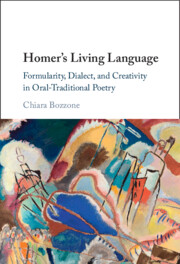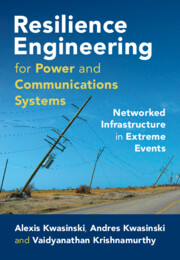Refine search
Actions for selected content:
63 results
Assessing impact on health, health care, and public support: The evolution of a CTSA hub’s evaluation and continuous improvement program
-
- Journal:
- Journal of Clinical and Translational Science / Volume 9 / Issue 1 / 2025
- Published online by Cambridge University Press:
- 27 August 2025, e211
-
- Article
-
- You have access
- Open access
- HTML
- Export citation
Evaluation of virtual prototypes: literature and empirical findings
-
- Journal:
- Proceedings of the Design Society / Volume 5 / August 2025
- Published online by Cambridge University Press:
- 27 August 2025, pp. 1605-1614
-
- Article
-
- You have access
- Open access
- HTML
- Export citation
Locally relevant indicators of environmental impact are required to support sustainable diets
-
- Journal:
- Proceedings of the Nutrition Society , First View
- Published online by Cambridge University Press:
- 26 August 2025, pp. 1-9
-
- Article
-
- You have access
- Open access
- HTML
- Export citation
BJPsych Open: celebrating 10 years of publishing excellence: a decade in review
-
- Journal:
- BJPsych Open / Volume 11 / Issue 5 / September 2025
- Published online by Cambridge University Press:
- 13 August 2025, e179
-
- Article
-
- You have access
- Open access
- HTML
- Export citation
The development, validity, and reliability of the Researcher Investment Tool
-
- Journal:
- Journal of Clinical and Translational Science / Volume 9 / Issue 1 / 2025
- Published online by Cambridge University Press:
- 11 August 2025, e160
-
- Article
-
- You have access
- Open access
- HTML
- Export citation
9 - Metrics and Performance Improvement: Patient Quality, Safety, and Experience
- from Section 1 - Administration
-
-
- Book:
- Observation Medicine
- Published online:
- 27 June 2025
- Print publication:
- 26 June 2025, pp 59-68
-
- Chapter
- Export citation
Door-In-Door-Out Times and Functional Outcomes after Stroke in a Large Canadian Hub-and-Spoke Network
-
- Journal:
- Canadian Journal of Neurological Sciences , First View
- Published online by Cambridge University Press:
- 14 April 2025, pp. 1-8
-
- Article
-
- You have access
- Open access
- HTML
- Export citation
The three degrees of metrical strength in Strict CV metrics, a theory without parsing
-
- Journal:
- Journal of Linguistics , First View
- Published online by Cambridge University Press:
- 20 February 2025, pp. 1-23
-
- Article
-
- You have access
- Open access
- HTML
- Export citation
The pursuit of well-being: Metrics and evidence
-
- Journal:
- Social Science History / Volume 49 / Issue 1 / Spring 2025
- Published online by Cambridge University Press:
- 04 April 2025, pp. 1-21
- Print publication:
- Spring 2025
-
- Article
- Export citation
6 - The Importance (and Erosion) of Norms
-
- Book:
- Judges, Judging, and Judgment
- Published online:
- 03 January 2025
- Print publication:
- 16 January 2025, pp 112-144
-
- Chapter
- Export citation
Exploring national infrastructures to support impact analyses of publicly accessible research: a need for trust, transparency, and collaboration at scale
-
- Journal:
- Data & Policy / Volume 6 / 2024
- Published online by Cambridge University Press:
- 09 December 2024, e69
-
- Article
-
- You have access
- Open access
- HTML
- Export citation

Homer's Living Language
- Formularity, Dialect, and Creativity in Oral-Traditional Poetry
-
- Published online:
- 11 April 2024
- Print publication:
- 18 April 2024
Quantitative Metrics in Mass-Gathering Studies: A Comprehensive Systematic Review
-
- Journal:
- Prehospital and Disaster Medicine / Volume 39 / Issue 2 / April 2024
- Published online by Cambridge University Press:
- 05 April 2024, pp. 195-205
- Print publication:
- April 2024
-
- Article
- Export citation
3 - Resilience Models and Metrics
-
- Book:
- Resilience Engineering for Power and Communications Systems
- Published online:
- 04 January 2024
- Print publication:
- 18 January 2024, pp 119-160
-
- Chapter
- Export citation

Resilience Engineering for Power and Communications Systems
- Networked Infrastructure in Extreme Events
-
- Published online:
- 04 January 2024
- Print publication:
- 18 January 2024
12 - Practitioner Views of Corporate Political Responsibility
- from Section V - Implementing Corporate Political Responsibility: Opportunities and Challenges
-
-
- Book:
- Corporate Political Responsibility
- Published online:
- 16 November 2023
- Print publication:
- 30 November 2023, pp 355-388
-
- Chapter
- Export citation
Household food insecurity in South Africa from 1999 to 2021: a metrics perspective
-
- Journal:
- Public Health Nutrition / Volume 26 / Issue 11 / November 2023
- Published online by Cambridge University Press:
- 29 September 2023, pp. 2183-2199
-
- Article
-
- You have access
- Open access
- HTML
- Export citation
1 - Evaluation as Power
-
- Book:
- The Evaluation Game
- Published online:
- 21 April 2023
- Print publication:
- 27 April 2023, pp 17-46
-
- Chapter
- Export citation
Building an infrastructure to support the development, conduct, and reporting of informative clinical studies: The Rockefeller University experience
-
- Journal:
- Journal of Clinical and Translational Science / Volume 7 / Issue 1 / 2023
- Published online by Cambridge University Press:
- 13 April 2023, e104
-
- Article
-
- You have access
- Open access
- HTML
- Export citation
